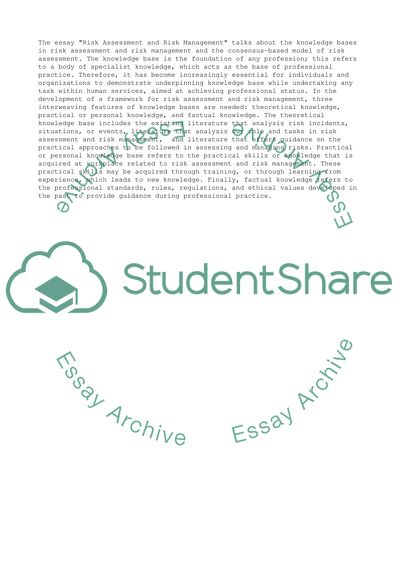Cite this document
(“Risk Assessment and Risk Management Essay Example | Topics and Well Written Essays - 1500 words”, n.d.)
Risk Assessment and Risk Management Essay Example | Topics and Well Written Essays - 1500 words. Retrieved from https://studentshare.org/business/1609382-risk-assessment-and-risk-management
Risk Assessment and Risk Management Essay Example | Topics and Well Written Essays - 1500 words. Retrieved from https://studentshare.org/business/1609382-risk-assessment-and-risk-management
(Risk Assessment and Risk Management Essay Example | Topics and Well Written Essays - 1500 Words)
Risk Assessment and Risk Management Essay Example | Topics and Well Written Essays - 1500 Words. https://studentshare.org/business/1609382-risk-assessment-and-risk-management.
Risk Assessment and Risk Management Essay Example | Topics and Well Written Essays - 1500 Words. https://studentshare.org/business/1609382-risk-assessment-and-risk-management.
“Risk Assessment and Risk Management Essay Example | Topics and Well Written Essays - 1500 Words”, n.d. https://studentshare.org/business/1609382-risk-assessment-and-risk-management.


